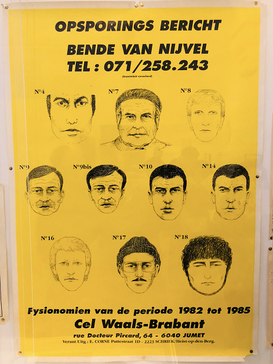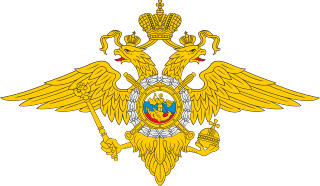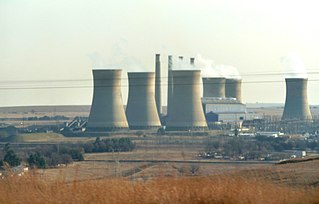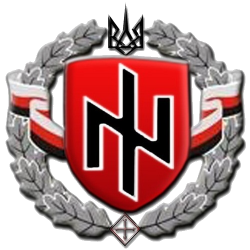Related Research Articles
Russian organized crime or Russian mafia, otherwise known as Bratva, is a collective of various organized crime elements originating in the former Soviet Union. The initialism OPG is Organized Criminal Group, used to refer to any of the Russian mafia groups, sometimes modified with a specific name, e.g. Orekhovskaya OPG. Sometimes the initialism is translated and OCG is used.

Art theft, sometimes called artnapping, is the stealing of paintings, sculptures, or other forms of visual art from galleries, museums or other public and private locations. Stolen art is often resold or used by criminals as collateral to secure loans. Only a small percentage of stolen art is recovered—an estimated 10%. Many nations operate police squads to investigate art theft and illegal trade in stolen art and antiquities.

The Brabant killers, also named the Nivelles Gang in Dutch-speaking media, and the mad killers of Brabant in French-speaking media, are responsible for a series of violent attacks that mainly occurred in the Belgian province of Brabant between 1982 and 1985. A total of 28 people died and 22 were injured. The actions of the gang, believed to consist of a core of three men, made it Belgium's most notorious unsolved crime spree. The active participants were known as The Giant ; the Killer and the Old Man. The identities and whereabouts of the "Brabant killers" are unknown. Although significant resources are still dedicated to the case, the most recent arrests are of the now-retired original senior detectives themselves, for alleged evidence tampering.

Vitaliy Vladasovich Grachev, known professionally as Vitas, is a Latvian-born Russian singer, songwriter and actor. Vitas is known for his unique falsetto and his eclectic musical style, which incorporates elements of operatic pop, techno, dance, classical, jazz, and folk, as well as allegedly having a vocal range of 7 octaves, though this is disputed.

Kostiantynivka is an industrial city in the Donetsk Oblast (province) of eastern Ukraine, on the Kryvyi Torets river. Administratively, it is incorporated as a city of oblast significance. It also serves as the administrative center of Kostiantynivka Raion (district), though it does not belong to it. It's also known as Kostyantynivka or Konstantinovka. It developed in the Soviet era into a major centre for the production of iron, zinc, steel and glass. Its population is approximately 67,350 .
Luhanskteplovoz, earlier known as Voroshilovgrad Locomotive Works is a large industrial company in Luhansk, Ukraine, manufacturing locomotives, multiple unit trains as well as other heavy equipment. Due to the War in Donbas it has not been operating since March 2015. According to media reports, by late 2015 the works were looted and completely inoperational.
Serbian organized crime or Serbian mafia are various criminal organizations based in Serbia or composed of ethnic Serbs in the former Yugoslavia and Serbian diaspora. The organizations are primarily involved in smuggling, arms trafficking, heists, drug trafficking, protection rackets, and illegal gambling. The mafia is composed of several major organized groups, which in turn have wider networks throughout Europe.

Rubizhne is a city located in Luhansk Oblast in eastern Ukraine. Situated on the left bank of the Donets river near the cities of Sievierodonetsk and Lysychansk, Rubizhne was founded in 1895 and incorporated as a city in 1934.
The Macedonian mafia is a body of illegal gangs and criminal organizations operating in North Macedonia and within the Macedonian diaspora. The organizations are primarily involved in smuggling, arms trafficking, heists, drug trafficking, protection rackets, and illegal gambling. The mafia is composed of several major organized groups, which in turn have wider networks in country and throughout Europe.

Crime in Russia refers to the multivalent issues of organized crime, extensive political and police corruption, and all aspects of criminality at play in Russia. Violent crime has been on a decline in Russia. Violent crime in Siberia is much more apparent than in Western Russia.

The Internal Troops of the Ministry for Internal Affairs of the Russian Federation was a paramilitary force of the Ministry of Internal Affairs of Russia from 1991 to 2016.

Camden Power Station in Mpumalanga, South Africa, is a coal-fired power plant operated by Eskom.
Punjabi-Canadian organized crime is made up of groups that are based in Canada and is made up predominantly of young adults and teenagers of Punjabi ethnic, cultural and linguistic background, while ethnically they typically belong to the Jat Sikh ethnicity specifically. Collectively, these groups are among the Top 5 major homegrown organized crime hierarchy across the nation in Canada coming in 3rd place, after the Asian Triads and White biker gangs. The 2004 RCMP British Columbia Annual Police Report ranked them third in terms of organization and sophistication in British Columbia, ranked behind the outlaw motorcycle clubs and aforementioned Chinese criminal organizations such as the Triads drug clans.

The National Guard of Ukraine is the Ukrainian national gendarmerie and internal military force. It is part of the Ministry of Internal Affairs, responsible for public security. Originally created as an agency under the direct control of the Verkhovna Rada on 4 November 1991, following Ukrainian independence, it was later disbanded and merged into the Internal Troops of Ukraine in 2000 by then-President Leonid Kuchma as part of a "cost-saving" scheme. Following the 2014 Revolution of Dignity, amidst the Russian intervention, the National Guard was re-established, and the Internal Troops were disbanded.

The Sparta Battalion is an army of the Russian Ground Forces. Previously they were a Russian separatist military unit of the breakaway Donetsk People's Republic (DPR) in eastern Ukraine until they were integrated into the Russian Armed Forces in 2022. The unit has been fighting against the Armed Forces of Ukraine in the Donbas War and the 2022 Russian invasion. Formed in 2014, it was initially led by the Russian-born Arsen Pavlov until his death in October 2016, and then by Vladimir Zhoga, from Sloviansk, until his death in March 2022.

The Ukrainian National Union is a Ukrainian far-right organisation. It was founded in 2009 and was a member of Social-National Assembly until 2013.

The Big Maple Leaf (BML) is a $1 million (CAD) gold coin weighing 100 kilograms (220 lb). A set of six of these coins was produced by the Royal Canadian Mint (RCM) in 2007, at their Ottawa facility where the first BML produced remains in storage. As of March 2017, the market value of a single Big Maple Leaf had reached approximately $4 million (USD). On 27 March 2017, one of the coins was stolen from a Berlin museum.

America is a sculpture created in 2016 by the Italian artist Maurizio Cattelan. An example of satirical participatory art, it is a fully functioning toilet made of 18-karat solid gold. It was stolen in 2019 from Blenheim Palace, where it was exhibited on loan from the permanent collection of the Solomon R. Guggenheim Museum.

The Raptor-class patrol boat, formally identified as Project 03160, is a series of Russian high-speed coastal patrol boats. Boats of the class belong to the 4th rank ships in the Russian Navy. This project was developed by the design bureau of JSC Leningrad Shipyard Pella on the instructions of the Russian Navy. The boats are built at the Pella shipyard in the town of Otradnoye, Leningrad Region. Due to the great similarity in appearance, the boats of the project can be confused with the Swedish CB90-class fast assault craft and other transport and landing boats of the 02510 BK-16 project, developed by the Kalashnikov concern and manufactured at Rybinsk shipyard.
The Hells Angels Motorcycle Club (HAMC), an international outlaw biker gang, has been involved in multiple crimes, alleged crimes, and violent incidents in Australia. The Hells Angels are legally classified as a criminal organisation in the Australian state of Queensland, and there have been attempts to classify them as such in New South Wales. The Hells Angels have been linked with drug trafficking and production, as well as a host of violent crimes including murder, in Australia.
References
- ↑ "Golden days". www.ruarchive.com. 28 September 2013. Retrieved 2022-05-21.
- ↑ "The Gold". www.sovsekretno.ru. Retrieved 2022-05-21.
- ↑ "Crazy gold". veli.ks.ua. Retrieved 2022-05-21.
- ↑ "Crazy gold". veli.ks.ua. Retrieved 2022-05-21.
- ↑ "Gold thieves in war". www.kommersant.ru. 26 April 1997. Retrieved 2022-05-21.
- ↑ "Gold war" (PDF). lawinfo.ru. Retrieved 2022-05-21.